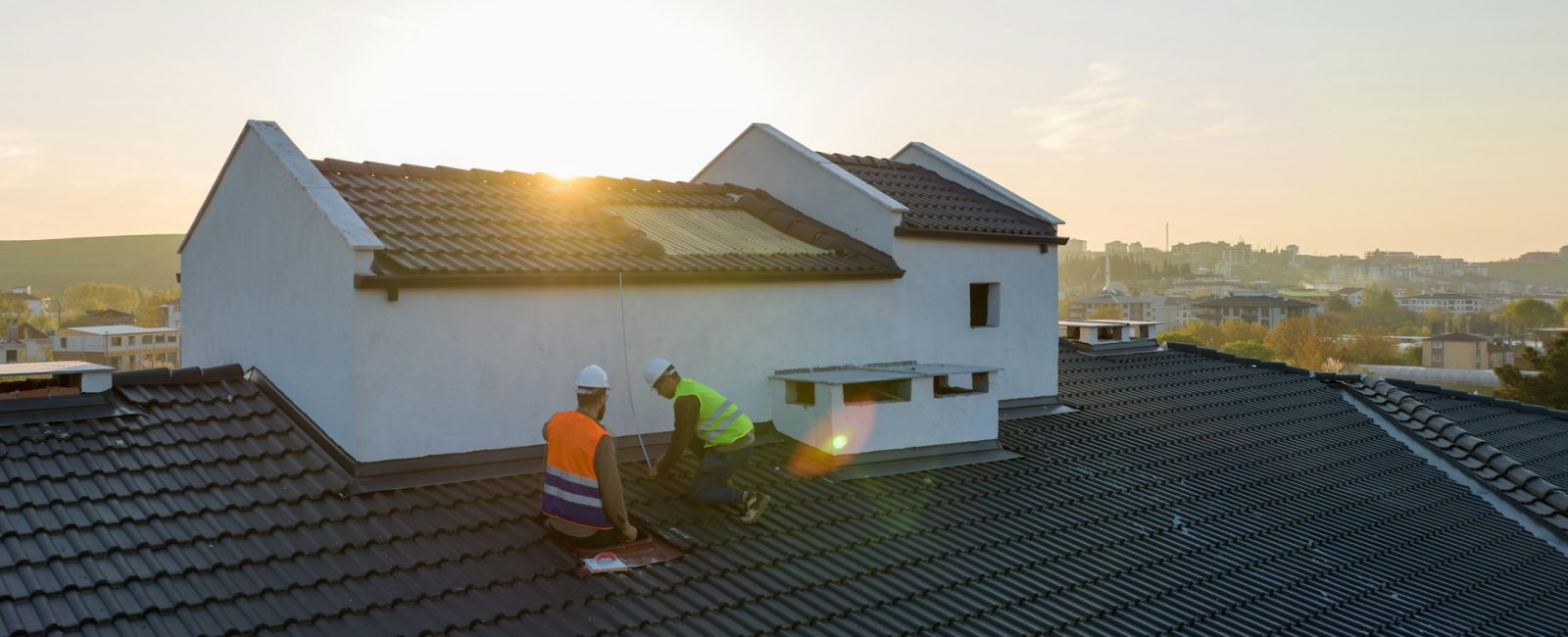A Home’s Peace Begins at the Top
Picture this. Rain is coming down hard, steam rising off the road, wind pushing branches like dancers in a storm. Inside, it is quiet, until it is not. You look up. A brown stain has appeared above your bookshelf, spreading slow and wide like spilled tea. The roof has failed. And worse? It has been failing for a while.
This is how it happens for most homeowners. No sirens. No alarms. Just signs: subtle, silent, and easily missed. Ignore them, and your calm home can flip into a nightmare. Catch them early, and the difference might be a quick patch or a massive rebuild.
Ceiling Stains Mean Trouble Is Already Inside
You glance up and spot a dark patch creeping across the ceiling. It does not belong there. Moisture has already made its entrance, seeping through insulation and softening drywall.
Letting this continue invites mold, warped ceilings, and decay. Here is the part no one tells you: by the time you notice a stain, water has often been working its way through your roof for weeks, maybe months.
Homes deserve repair before they break. Roof renovation is one of the most vital home improvements and noticing that first blemish may be the saving grace for everything beneath the rafters, a truth echoed in vital improvements for your home.
Shingles That Curl, Crack, or Disappear Signal Structural Risk
Shingles are your roof’s frontline defense. Once they start curling at the edges, splitting down the middle, or vanishing completely, the barrier is breached. Rain will find a way in.
It often starts small, just one or two shingles. Then a section. Then a leak that spreads faster than you expect. And once shingles break down, the countdown to deeper structural damage begins.
Moss and Algae Feed Moisture and Wear
Moss may look quaint at first, a touch of green softening the roofline. Do not be fooled. Moss acts like a sponge, holding moisture against shingles until rot follows.
Algae are just as destructive, especially in humid or shaded areas. Once moisture eats into your shingles, the problem is not cosmetic, it is structural, and it spreads fast.
Daylight in the Attic Spells Exposure
Flip off the attic light and let your eyes adjust. If you see daylight streaming through cracks, it is not poetic, it is a problem. Those shafts of light are open doors for water, pests, and heat loss. Even a small gap can cost you hundreds in wasted energy before the first leak appears.
Granules in the Gutter Reveal Wear Under Pressure
Take a closer look in your gutters. Those coarse, sandy bits are granules, the UV shield your shingles depend on. When they show up in the gutter, shingles are shedding their protection and leaving your roof vulnerable.
Staying on top of maintenance is how you stop this cycle. The bottom line is when shingles lose their armor, the countdown to failure has already begun. It is the same principle behind sustainable living: sustainability starts at home, and steady upkeep today secures a stronger tomorrow.
Flashing Failures Create Silent Leaks
Chimneys, vents, and skylights rely on flashing, thin strips of metal that seal out water. But flashing bends, rusts, or cracks over time. And when it does, water gets in.
Leaks from failed flashing rarely announce themselves right away. By the time stains appear on ceilings or walls, the damage has usually spread across insulation, studs, and flooring.
A Sagging Roofline Should Never Be Ignored
Stand back from your home and take a look. Do you see a dip in the roofline? A sag where the structure should stand straight? That curve is not design, it is distress.
Heavy snow, pooling water, or rot can weaken beams until they bow. A sagging roofline almost always means the framework inside is already compromised. At that point, it is no longer a repair, it is an emergency.
Musty Smells Tell the Story Before Mold Shows Its Face
Sometimes the first warning is not visual, it is sensory. That damp, earthy smell creeping through the attic is mold in motion.
Once mold takes hold, it spreads faster than you think, behind insulation, into walls, across floors. Fixing the roof leak costs far less than tearing apart your home to remediate mold. Regular upkeep does more than prevent costly surprises, it preserves the safety and comfort of daily life. Regular upkeep does more than prevent costly surprises, it preserves the safety and comfort of daily life, just as residential boiler installations illustrate the value of consistent maintenance for a home’s wellbeing.
An Aging Roof Becomes a Risky Gamble
Most asphalt shingle roofs last twenty to twenty-five years. Beyond that, the materials lose strength, adhesives weaken, and flashing starts failing. Even if everything looks intact, age alone makes your roof a gamble.
Think about it. You would not drive on bald tires in a storm. So why risk your entire home under a roof that has outlived its design life?
Do Not Wait Until It Is Headline Worthy
Roof problems do not scream for attention at first. They whisper. A missing shingle here. A damp patch there. Left alone, those whispers grow into collapse.
Catching them early is what separates a quick fix from a full-blown overhaul. Just like businesses that turn to commercial solar panels to protect long term costs, homeowners who protect their roofs today safeguard their future comfort.
Secure the Structure So the Story Continues
A damaged roof rarely crashes in with spectacle. More often, it unravels quietly: a stain spreading across the ceiling, a musty draft whispering through the attic, a sag in the line you almost overlook. These signs may feel small, but together they shape the safety of the entire story playing out beneath them.
For anyone who values words, work, and the spaces that hold them, paying attention to structure is not just about beams and shingles. It is about preserving the silence above that lets stories unfold, conversations breathe, and ideas grow.
Expert voices, including Ethos Roofing & Restoration, remind us that responding early to small warnings is not just preservation of a roof, but preservation of the life lived beneath it. Because when the roof holds, the stories inside are free to continue, protected in the spaces where voices speak, pages turn, and ideas take shape.





